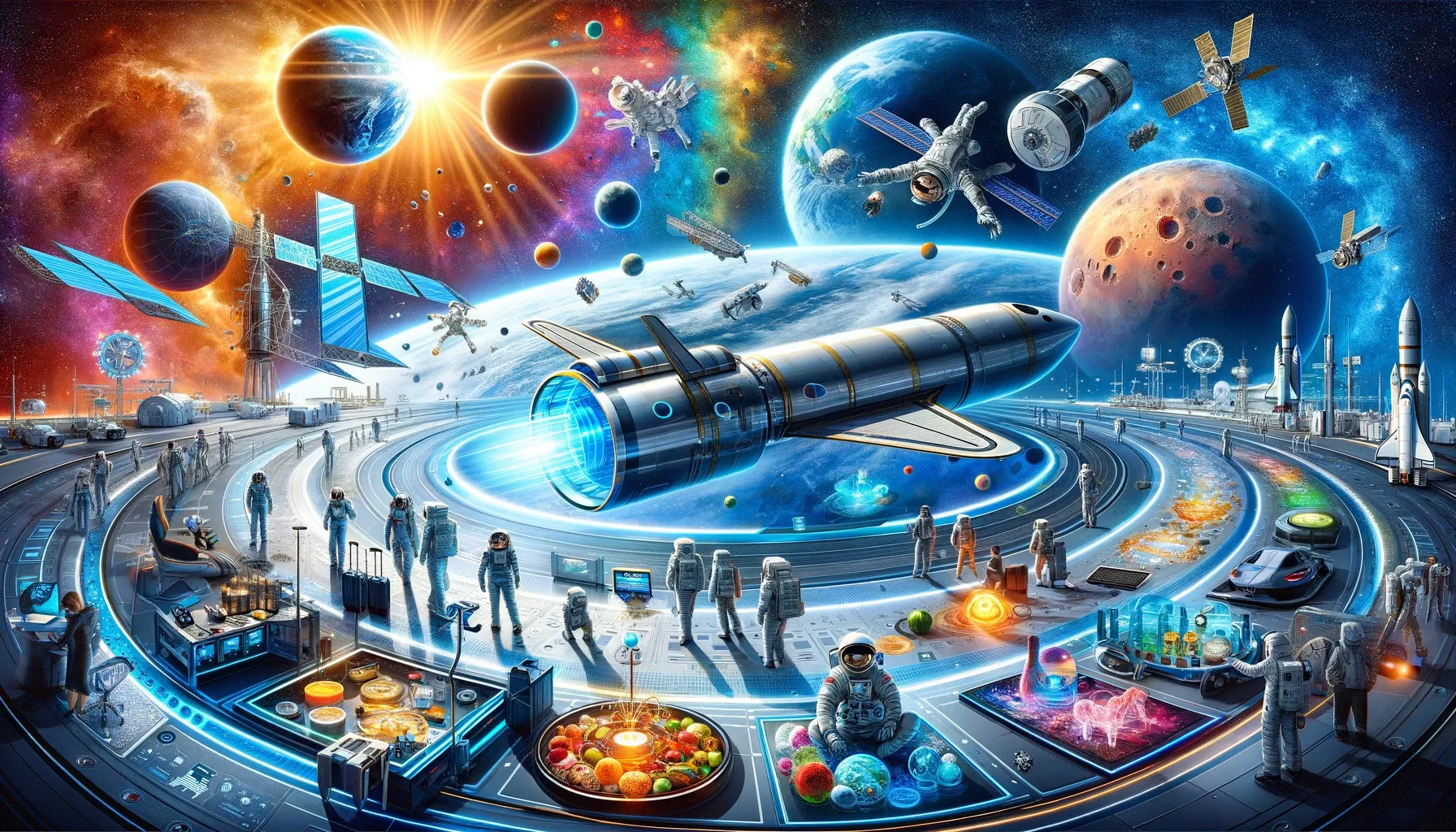The Future of Space Travel in 2050: A New Frontier of Innovation and Exploration
As we look towards the year 2050, space travel has transcended the realm of science fiction and become an integral part of human life. The illustration before us paints a vivid picture of the advancements and the transformative impact of space tourism on various fields. The sleek spacecraft, tourists experiencing

As we look towards the year 2050, space travel has transcended the realm of science fiction and become an integral part of human life. The illustration before us paints a vivid picture of the advancements and the transformative impact of space tourism on various fields. The sleek spacecraft, tourists experiencing zero gravity, and the backdrop of Earth, the Moon, and Mars symbolize the new era of exploration and innovation.
In 2050, space tourism is no longer an exclusive endeavor for the elite. The development of advanced propulsion systems and cost-effective technologies has made space travel accessible to a broader audience. Sleek spacecraft equipped with cutting-edge technology ensure a safe and thrilling experience for tourists. The zero-gravity environment, once a novelty, is now a commonplace adventure for those seeking an extraordinary escape from Earth.
The illustration showcases a host of futuristic technologies that have emerged from the demands of space travel. Advanced spacesuits with innovative textiles provide enhanced protection and comfort for astronauts and tourists alike. These suits are designed to withstand the harsh conditions of space while incorporating smart materials that adapt to the wearer's needs.
Medical equipment for space health studies has seen significant advancements. In the microgravity environment, researchers are uncovering new insights into human physiology, leading to breakthroughs in medical treatments and preventive care. These innovations have profound implications not only for space travelers but also for healthcare on Earth.
Space travel necessitates specialized food packages that cater to the unique requirements of astronauts and tourists. The development of nutritious, long-lasting, and palatable food options has revolutionized how we think about sustenance in space. These advancements have also influenced food technology on Earth, leading to the creation of more sustainable and efficient food production methods.
The illustration highlights eco-friendly technologies inspired by space exploration. The need for sustainable living in space has driven the development of closed-loop systems that recycle air, water, and waste. These systems are being adapted for use on Earth, promoting environmental sustainability and resource conservation.
By 2050, human presence on the Moon and Mars is a reality. The Moon serves as a gateway for deeper space exploration, with lunar bases supporting scientific research and resource extraction. Mars, the next frontier, is home to pioneering colonies that are pushing the boundaries of human ingenuity and adaptability. The vibrant colors of Earth, the Moon, and Mars in the illustration symbolize the interconnectedness of our expanding horizons.
The impact of space tourism extends beyond technological and scientific advancements. It fosters a sense of global unity and perspective, as people from diverse backgrounds come together to explore the cosmos. The shared experience of viewing Earth from space underscores the fragility and beauty of our planet, inspiring greater efforts towards its preservation.
The future of space travel in 2050 is bright, dynamic, and filled with a sense of wonder and innovation. As we continue to explore the cosmos, we unlock new possibilities and drive advancements that benefit all of humanity. The panoramic illustration serves as a testament to our collective ambition and the boundless potential of space tourism. With each journey beyond our planet, we move closer to a future where the stars are within reach, and the spirit of exploration knows no bounds.




